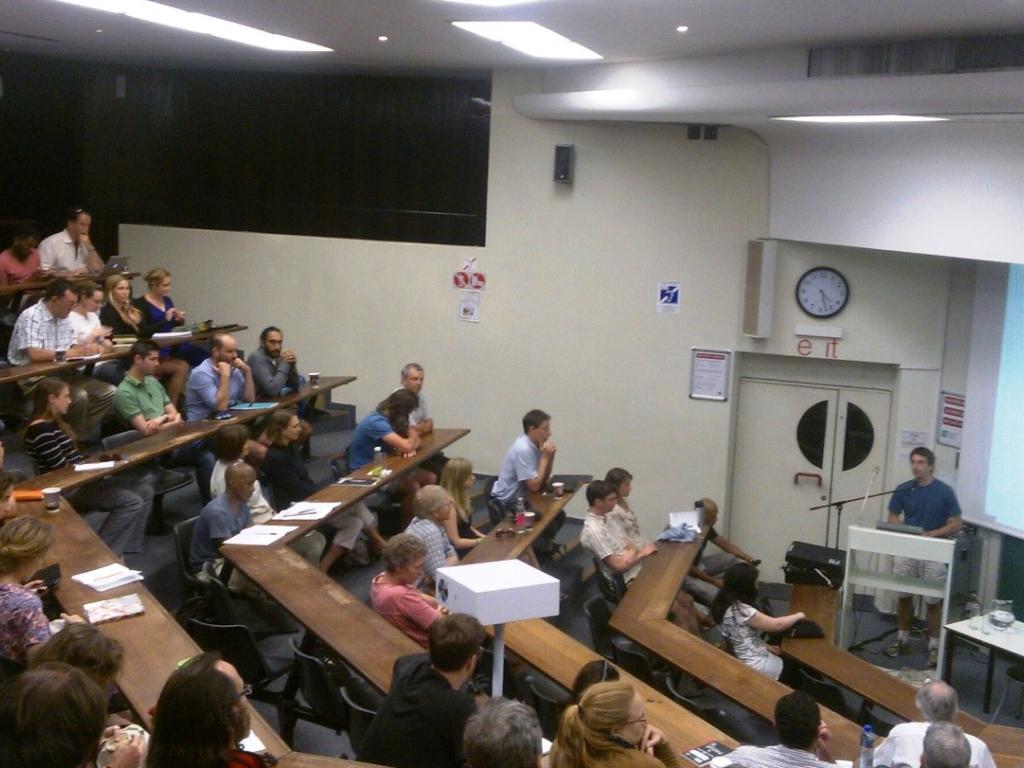Dealing with uncertainty in projections of climate change

written by Alicia Okeyo
On 10 December 2014, the African Climate & Development Initiative’s Research Chair Dr Res Altwegg, hosted a mini-symposium entitled How to deal with uncertainty in projections of climate change effects. A wide variety of speakers shared their insights and stimulating discussions among the audience about climate change effects on biodiversity. They include: Dr Chris Lennard (Climate Systems Analysis Group), Prof Guy Midgley (South African National Biodiversity Institute), Genevieve Pence (CapeNature), Dr Colin Beale (York University), Dr Raquel Garcia (University of Copenhagen) and ACDI’s very own Prof Mark New.
Climate change has a global impact on our biodiversity. According to Dr Altwegg, such effects include displacement of some species’ niches and range shifts. These phenomena alter the natural landscape, impacting which areas certain species occurring in. This has numerous effects on where certain crops can be grown successfully and where local indigenous species assemblage occurs. These changes in turn affect where protected areas can exist - assuming that new viable natural land exists that can support species and niche shifts within a particular area. The main focus of the mini-symposium was, however, the alternative: when climate change results in little or no viable natural land to support these shifts, and therefore fuels the disappearance of species climatic niches and eventually species extinction.
Dr Altwegg mentioned that a considerable amount of effort has been made to make projections of climate change induced species range shifts. Unfortunately, a number of fundamental uncertainties are present in this projection process, hindering the reliability of predictions. Dr Chris Lennard, climate expert and Director of University of Cape Town’s Climate Systems Analysis Group (CSAG) explained how simulation of geological processes through climate models can help predict climate change effects within a particular region. This is done through what Lennard terms as ‘downscaling’; typically dividing the atmosphere into blocks of sub-regions during the modelling process in order to simulate the climate of smaller regions of the earth. “Models have become more sophisticated since the nineties,” Dr Lennard said, “they now have added geophysical processes to modelling climate. General circulation models (GCMs), such as ocean atmospheric circulation models, have become more advanced in simulating the response of the global climate system to increasing greenhouse gas concentration.” The advantages of using GCMs in this way are numerous; Lennard mentioned. Not only are they able to make useful predictions but also alliow comparisons between different regions and even across different time periods. Despite these benefits there are also several sources of uncertainty to climate modelling. According to Lennard, even when using a single model, tweaking the set of input data can yield enormously different results; and the downscaling of this data may yield different results when run through the same model, thus the uncertainties may be challenging. On top of this, uncertainties may arise when using the model inappropriately. “Data can be useless if you do not know what the research question is and whether the data is appropriate for it,” Lennard said.
According to Genevieve Pence, environmental planner at CapeNature, modelling climates for conservation planning and land use management can help determine what we need to protect today for tomorrow. Models can be used to break down landscapes into planning units of different species abundance. “This is especially useful to protect climate refugia and to plan for costs of protecting these landscapes.” Pence added. Protecting species refugia may be the key to combating species climatic niches disappearances and species extinction in future.
Uncertainty in climate projections presents much difficulty, especially when hindering the reliability of climate projections used for land use management and cost planning. According to South African National Biodiversity Institute's Professor Guy Midgley, such uncertainties hinder the reliability of assessments of the potential effects and options for climate change adaptation and mitigation such as those recorded in the Intergovernmental Panel on Climate Change (IPPC) reports. This presents a certain amount of risk when using the data presented in these reports. In conclusion to the talks, Midgley noted two pertinent questions to be pondered upon concerning how to deal with the uncertainties of climate projections, i.e. “How much detail does one need to communicate risk and the way forward with climate projections?” and “Can we say mitigation will reduce the risk of uncertainty even after these have been communicated?”
Clearly, there is much to learn about the uncertainties of climate projections to understand the effects of climate change on our biodiversity, particularly to better plan for conservation efforts.